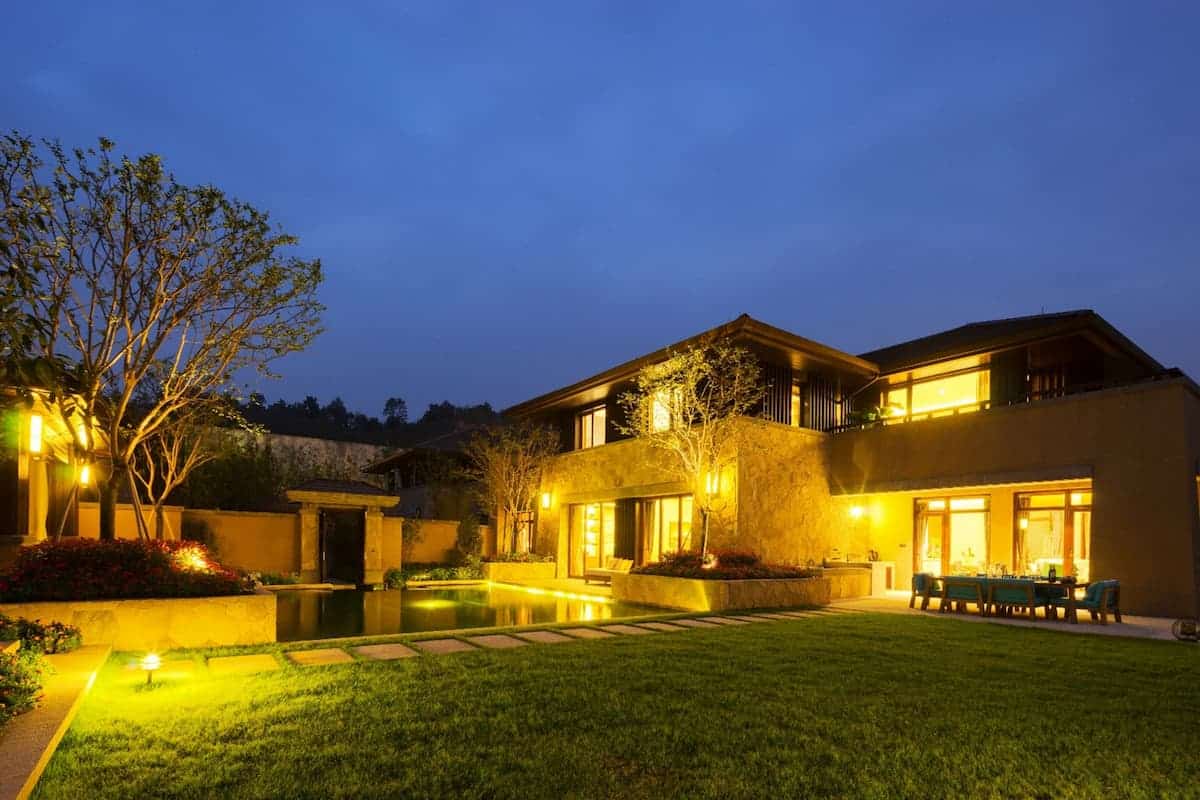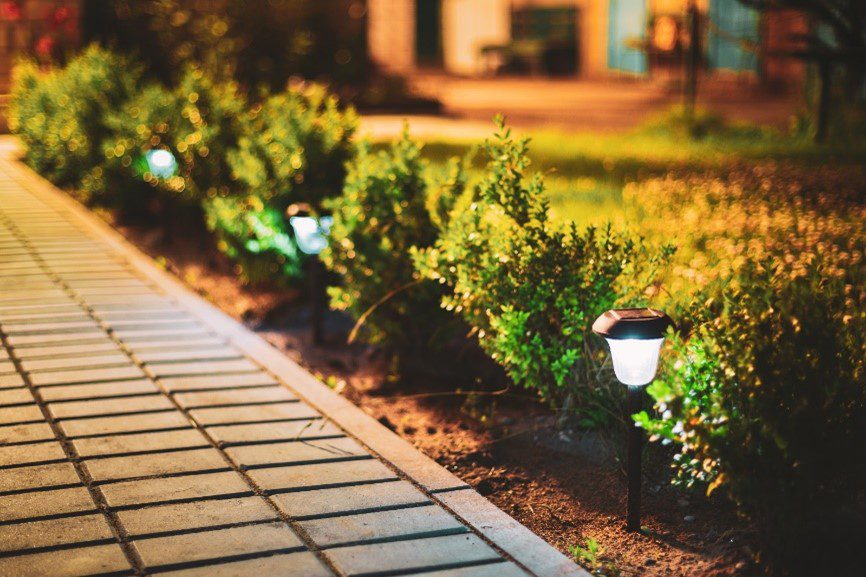The Thompsons were getting ready for bed when Mr Thompson noticed the motion sensor security lights turn on outside, illuminating a shadowy figure lurking by their front gate. The backyard lights then flickered on as well, exposing another trespasser. The startled individuals quickly fled the property.

The Thompsons were relieved that their security lighting had deterred the intruders, and they agreed to upgrade the system, not just because it had been doing its job but also because coming home to an empty house without any lights on was unsettling.
The absence of lighting can feel like an open invitation to unwanted visitors, and outdoor security lighting offers a solution to discourage intruders and improve safety by illuminating pathways and porches.
This not only brings you peace of mind but also has the potential to transform your garden. By strategically illuminating key features, outdoor lighting can create the illusion of a larger space and enhance the overall aesthetics of your garden.
Creating an outdoor lighting plan.
Creating a plan for security, safety, and recreational outdoor lighting before starting a project ensures the project meets aesthetic, functional, and regulatory requirements (avoiding costly revisions or fines later) while maximising efficiency and longevity.
What are the options around security lighting control?
There are so many options around security lighting controls that it can be overwhelming, but here is some guidance which will make it easier to decide:
Traditional switches: Traditional switches are the most common version of lighting control. They are the standard, manual household switches you have on your walls at home to turn on lights and appliances. They’re simple, easy to use, require no additional equipment or installation, and are inexpensive.

Motion sensors: When someone enters an outdoor space, they activate the lighting, and when they leave, the lighting turns off. These sensors work well alongside security cameras or on their own to deter intruders. They are also great for dark paths, for example, on the side of the house and through to the backyard. They help reduce energy consumption and electricity costs.
Photosensors: Also known as daylight sensors, photosensors detect the level of ambient light in a space and adjust the lighting accordingly. These sensors are ideal for outdoor lighting to automatically turn them on or off in the morning and the evening.
Timers: Manual programmable light switch timers are great if you are away and want to have your lights turned on and give the illusion that you’re home. Other timers include automatic light switches and digital timers, which vary the lighting levels at different times of the day and night.
Smart switches: These enable you to control your lighting from anywhere using a variety of digital devices, such as your smartphone. Some of these timers can be connected via Bluetooth for voice control. They’re great for when you’re on holiday or working late and want to control your lighting, deter would-be intruders, or even have the lights on when you get home.
Should you use LED or Fibre-Optic bulbs
for outdoor lighting?
Fibre optic lights are usually chosen over LED lights because they can change colours, but LED lights can now do that, too, with a bit of extra wiring. So, we recommend LEDs instead.
LED outdoor lighting saves energy, lasts longer, and requires less maintenance. It is also eco-friendly and offers bright, directional light that can be customised for different uses in assorted styles and colours. Additionally, LEDs turn on instantly, are flicker-free, and can be integrated with smart home systems for extra functionality.

Outdoor lighting tips.
- In-ground lights up-light pathways or driveways, and apart from being aesthetically pleasing, they are easier to clean and don’t gather cobwebs like light posts.
- Pathway lighting, if not in-ground, is generally installed low to the ground, so beware of gardening issues as we have been called in to rewire accidentally cut wiring.
- The best idea is to combine functions – like uplighting trees, which also illuminates the pathway.
Lighting styles: Modern and rustic. Where can I find options?
Lighting outlets such as Lighting Plus, Lighting Direct, Moonscape Lighting, Hunza Lighting, or Switch Lighting can give some great ideas. But the best thing to do is Google ‘Outdoor Lighting’ or ‘Security Lighting’ and save the photos you like. We can take it from there.
Where should they be positioned, and how bright should they be?
We highly recommend putting security lights where your security cameras are pointed. This will improve your view and picture. The lights should be bright—the brighter, the better! Especially if you’re looking at security lighting for a public area, like a school, where lights are a primary deterrent.
What are the costs of installing and running outdoor lights?
Because outdoor lights use LEDs, their running costs are negligible. Powering even a reasonably large outdoor display of LED garden lights for an entire month is likely to cost less than an average fast-food meal. Of course, it all comes down to each property’s different requirements.
Book a consultation with us, and we’ll provide a quote based on your wants and needs—and in stages if that’s required.
